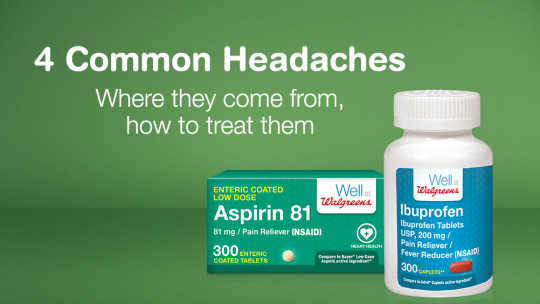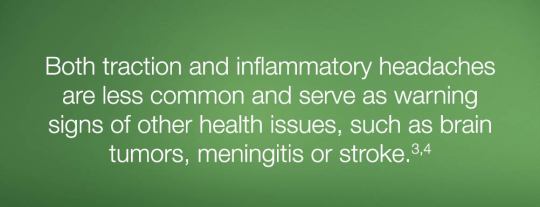
Headaches can be a
temporary nuisance—but they could also be a sign of something more serious. How
can you tell the difference?
The pain from headaches comes from
the network of nerves that extends over the scalp; certain nerves in the face,
mouth and throat; and the muscles of the head and blood vessels found along the
surface and at the base of the brain.1 Nearly half the U.S. adult
population experience headaches.2 So how do you treat a headache? It starts with
knowing what type you have.
Types of Headaches
There are four types of headaches:
tension, traction, inflammatory and vascular:
Tension headaches are most common—they make up 90% of all
headaches.3 They produce mild to moderate pain, are typically caused
by stress, neck strain, hunger or missed meals, depression, anxiety or lack of
sleep.4 They involve the tightening of facial and neck muscles and
may create a feeling of a band of pain, a dull ache or pressure around the head
or neck.3
Vascular headaches include cluster headaches, which cause repeated,
intense episodes of pain; toxic headaches, which occur during fever from
disease; and migraines, which cause moderate to severe pain on one or both
sides of the head, upset stomach, nausea, vision impairment, and light and
sound sensitivity.3, 4
Traction headaches can occur if pain-sensitive parts of the head
are pulled, stretched or displaced, such as eyestrain.
Inflammatory headaches are often a result of diseases of the sinuses,
spine, neck, ears or teeth.

Treatment
If headaches occur three or more
times per month, treatment by a healthcare provider is recommended.3
Those that occur 15 days a month or more are considered chronic.4
Over the counter medications, such
as aspirin, ibuprofen, or acetaminophen are helpful in reducing pain symptoms.3
Medication combined with other therapies such as stress reduction, biofeedback,
massage, hot/cold compresses and reducing or eliminating certain foods from
your diet can also help control the onset or severity of headaches.4
For those that experience chronic headaches and migraines, prescription
medications such as triptans, and preventive medications such as metoprolol
tartrate, propranolol, amitriptyline, divalproex sodium or topiramate can aid
in reducing or preventing symptoms.4
Seek immediate medical attention if you have a
headache after a head injury, or if you have a headache along with a stiff
neck, fever, confusion, loss of consciousness, or ear or eye pain.3, 4 If you suffer sudden, severe headaches, or have been experiencing persistent
headaches for over two weeks, speak to your doctor to discuss treatment options
that may work best for you.3, 4
By Nyahne
Bergeron, MPH
Medical Review Analyst, Clinical Programs and
Quality
References
1. National
Institutes of Health. Understanding headaches: From mild to migraine. NIH
Medline Plus. 2009:4(2)16-17. Available from
https://medlineplus.gov/magazine/issues/spring09/articles/spring09pg16-17.html
2. World
Health Organization. Headache Disorders. Available from http://www.who.int/mediacentre/factsheets/fs277/en/
3. National
Institute of Neurological Disorders and Stroke. NINDS headache information page.
National Institutes of Health. 2016. Available from
http://www.ninds.nih.gov/disorders/headache/headache.htm
4. National
Institutes of Health. Headache symptoms, diagnosis, and treatment. NIH Medline Plus. 2009;4(2)18-19. Available from https://medlineplus.gov/magazine/issues/spring09/articles/spring09pg18-19.html
5. Mayo
Clinic. Headaches: Treatment depends on your diagnosis and symptoms. 2015.
Available from http://www.mayoclinic.org/diseases-conditions/chronic-daily-headaches/in-depth/headaches/art-20047375


